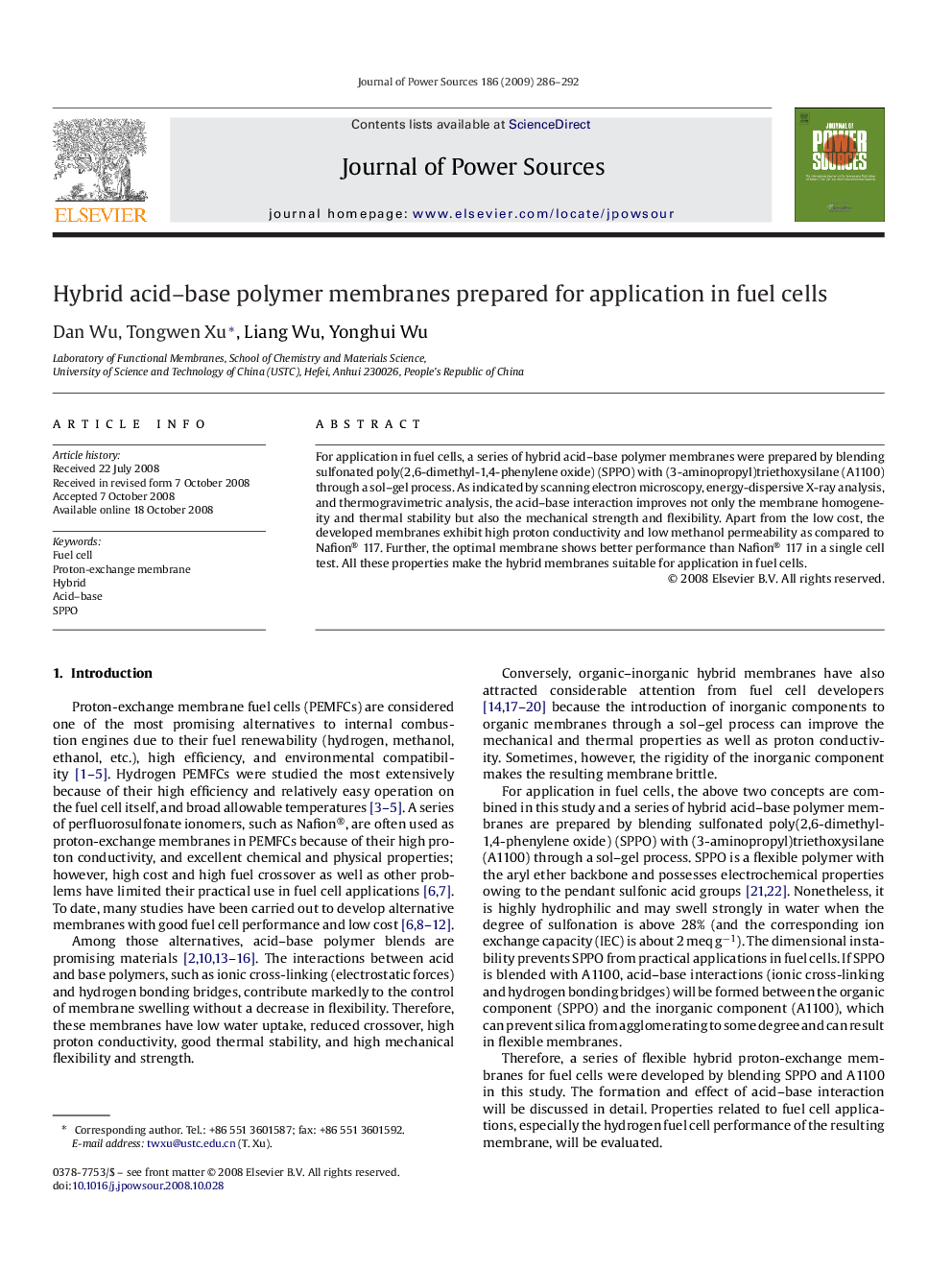| Article ID | Journal | Published Year | Pages | File Type |
|---|---|---|---|---|
| 1291311 | Journal of Power Sources | 2009 | 7 Pages |
For application in fuel cells, a series of hybrid acid–base polymer membranes were prepared by blending sulfonated poly(2,6-dimethyl-1,4-phenylene oxide) (SPPO) with (3-aminopropyl)triethoxysilane (A1100) through a sol–gel process. As indicated by scanning electron microscopy, energy-dispersive X-ray analysis, and thermogravimetric analysis, the acid–base interaction improves not only the membrane homogeneity and thermal stability but also the mechanical strength and flexibility. Apart from the low cost, the developed membranes exhibit high proton conductivity and low methanol permeability as compared to Nafion® 117. Further, the optimal membrane shows better performance than Nafion® 117 in a single cell test. All these properties make the hybrid membranes suitable for application in fuel cells.
